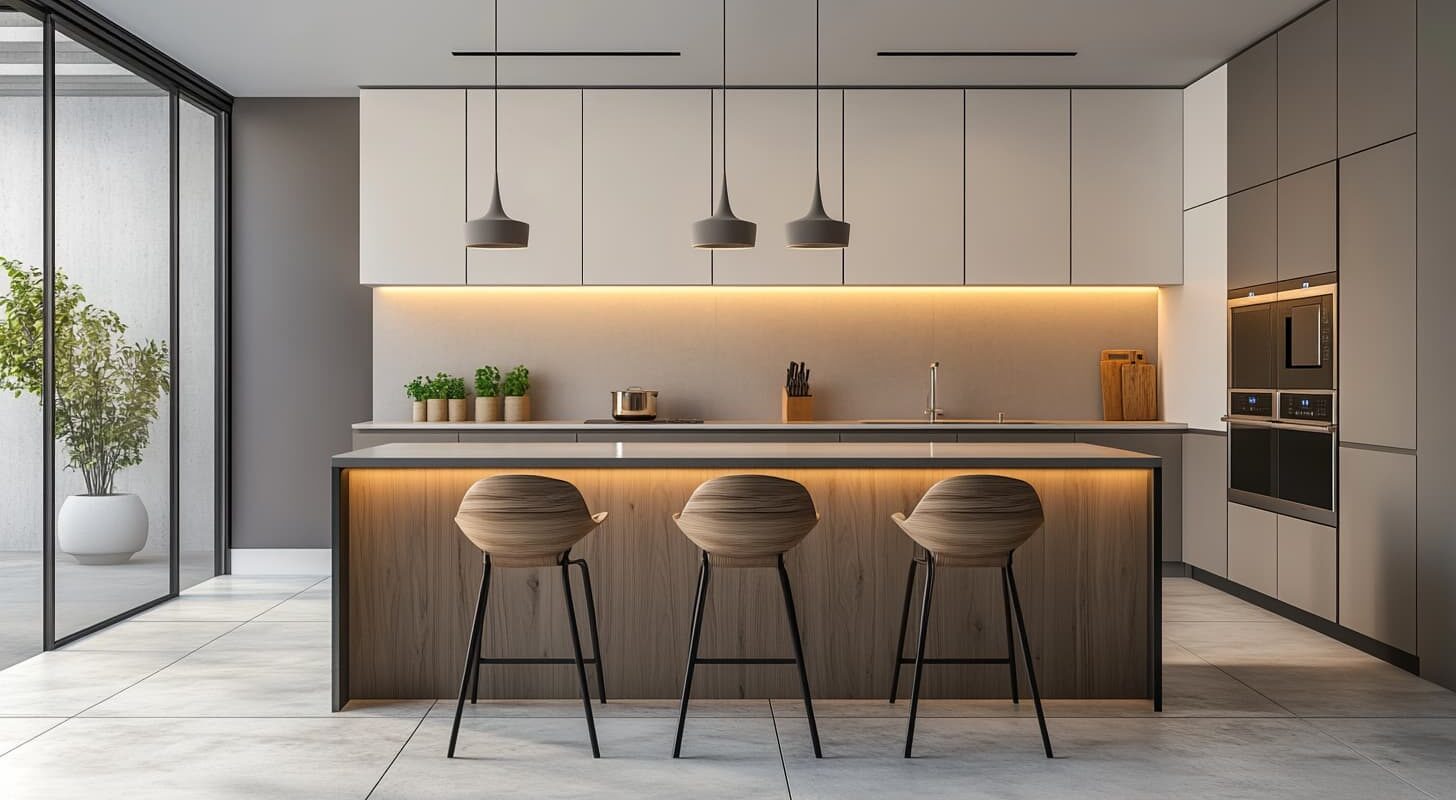The Beauty and Challenge of Open Kitchen Design
Open kitchens are the heart of many modern homes. They’re where family gathers, where stories are shared, and where great food—like bold, juicy burgers—is made. The appeal is clear: you cook while staying connected to the people and energy around you.
But open kitchens come with a real trade-off—noise. The same sizzling that gives burgers their magic can quickly overwhelm a living space. Blenders, range hoods, dish clatter—they all carry into adjacent rooms. And while some sound is part of the charm, too much can wear thin, especially in small or echo-prone layouts.
That’s where resources like Sound Pro Solutions come in. For home cooks who love the craft—especially those who love burgers and use high-heat grills and cast iron—professional acoustic guidance can make all the difference. From subtle wall treatments to smart appliance placement, they help transform loud, echo-filled spaces into warm, balanced ones without compromising design.
Understanding Your Open Kitchen’s Impact on Daily Life
How Cooking Sounds Travel Through Open Spaces
In a closed kitchen, walls help contain sound. In an open kitchen, there’s nothing to stop the snap of oil or the hum of a dishwasher from spilling into your living or dining room. Hard surfaces like tile, stainless steel, and glass reflect sound, amplifying even simple tasks like chopping or setting down a pan.
This becomes especially noticeable during busy prep times when multiple appliances run at once—grills heating, vent hoods roaring, timers beeping. The sound layers stack quickly.
Peak Noise Times and Family Harmony
The evening is prime time for both family life and cooking. That overlap means your burger prep might be happening while someone’s doing homework, taking a call, or just trying to wind down. Without sound management, tensions can rise before dinner even hits the plate.
Understanding the timing of noise and how it fits into your household rhythm is key. That awareness can help you adapt not just your equipment but your habits.
The Science Behind Kitchen Acoustics
Every kitchen has a sound profile. Materials, layout, and ceiling height—all affect how noise moves. High ceilings create an echo. Long countertops bounce sound. Glass and metal surfaces offer no absorption.
That’s why treating an open kitchen acoustically is less about muting all sound—and more about softening its impact. Adding even one or two absorptive elements can significantly reduce sharpness and make voices clearer, even with the grill going.
Essential Equipment Choices for Quieter Burger Preparation
Selecting Low-Noise Kitchen Appliances
Not all appliances are created equal when it comes to sound. A high-end blender or range hood might deliver great performance—but also pump out 70–80 decibels of noise. When shopping for new gear, pay attention to sound ratings. Many newer models now include “quiet” modes or decibel specifications right on the box.
Look for dishwashers labeled at or below 45 dB, and favor induction cooktops, which operate more quietly than gas. If you’re running fans or vents while searing burgers, consider models with variable speeds so you can adjust the speed once the smoke clears.
Grill Options That Won’t Overwhelm Your Living Space
Indoor grilling is a must for many burger enthusiasts—but it doesn’t have to shake the walls. Infrared grills and cast iron griddles on induction tops are great alternatives to smokier or louder options. They heat evenly, reduce flare-ups, and don’t need a massive ventilation setup to keep the kitchen clear.
If you opt for a full indoor grill or high-BTU setup, placing it closer to exterior walls or integrating localized ventilation can help limit the sound spread throughout the rest of your home.
Smart Storage Solutions That Reduce Clatter
Sometimes, the loudest moments in the kitchen come from drawers slamming, lids clanging, or metal utensils rattling in a container. That’s all avoidable.
Use soft-close hardware on drawers and cabinets. Store tools in padded inserts or silicone-lined holders to protect them from damage. Keep prep items organized and within arm’s reach so you’re not constantly shifting gear during high-heat moments.
Managing Sound in Open Kitchen Environments
Strategic Placement of Noise-Generating Equipment
Think of your kitchen layout like a sound map. Place louder appliances—like dishwashers, grinders, or ventilation—away from open zones like the living room or dining area. Tuck them into corners or align them with built-ins that can absorb or redirect sound.
If you’re planning a renovation, consider “sound pockets”: semi-enclosed zones for noisy equipment, even within an open plan.
Quick DIY Solutions for Sound Absorption
You don’t need to redesign your kitchen to cut the echo. Try these easy fixes:
- Add washable fabric panels or cork boards to side walls
- Hang thick curtains or blinds near adjacent glass doors
- Lay down flat-weave rugs or runners in high-traffic zones
- Place open shelving with books or dishes to diffuse sound waves
Even decorative elements—like wall-mounted herb racks or framed recipe prints—can take the edge off harsh reflection.
Professional Acoustic Solutions for Serious Home Chefs
If you cook daily and love the energy of an open kitchen, but hate the echo and noise, it may be worth considering further options. Acoustic ceiling tiles, integrated wall absorbers, or hybrid materials (like acoustic plaster) offer professional-level sound control that blends seamlessly with modern kitchen design.
Companies like Sound Pro Solutions offer custom consultations tailored to residential layouts—especially for passionate home chefs using commercial-style equipment. They focus on preserving your kitchen’s visual openness while dialing in the soundscape to keep everything calm, clear, and conversation-friendly.
Creating Sound Barriers Without Sacrificing Open Design
Barriers don’t have to mean walls. A tall bookshelf, a planter wall, or even a half-height glass divider can subtly redirect sound without blocking sightlines. Open shelving units with mixed textures and materials also help scatter noise while maintaining an airy layout.
The goal is to zone your kitchen acoustically, not just visually—so each area has its own mood and function without competing for sonic space.
Timing and Technique for Considerate Cooking
Planning Burger Prep for Optimal Family Time
Good burgers deserve your full attention—but so does family time. Try to schedule high-heat cooking during moments when the house isn’t packed with distractions. If you’re hosting, prep patties and toppings ahead of time so the grill moment is fast and focused.
Consider using a countertop prep zone further from the social area for slicing and assembling, which helps keep movement and noise contained during peak hours.
Quiet Cooking Methods That Don’t Compromise Flavor
You don’t have to give up flavor to cook quieter. Pan-searing on a cast-iron skillet over medium heat with a splatter guard produces less noise and mess than blasting high heat. Pre-heating pans properly helps reduce sizzle shock. Using lid covers on pans and grills also limits popping and steam release.
Slow-cooked onions, oven-finished patties, or sous-vide techniques can all bring rich flavor with minimal sound. Save the smoke show for weekends—on weeknights; subtle technique goes a long way.
Communication Strategies During Active Cooking
Cooking in an open kitchen means multitasking with people around. Set the tone early: a simple “Hey, I’m about to turn on the vent—talk to me now!” helps avoid frustration.
Use gestures or visual cues when the sound is up, or create routines where the family knows when “quiet mode” is needed (like when flipping or searing). Keep devices or music at manageable levels to avoid stacking noise layers.
Design Elements That Enhance Both Function and Comfort
Great open kitchens do more than look good—they feel good. Incorporate surfaces that soften sound, like matte finishes, wood accents, and natural fabrics. Use lighting zones to define prep, cook, and relax areas, reducing chaos and giving each part of the space a role.
Install seating that encourages flow—such as stools set back from the main prep zone—to keep traffic out of your cooking area. Mix textures and heights across the kitchen-living space to subtly break up the sound without losing openness.
And most importantly, design with the cook in mind. If burgers are your love language, make sure your space supports the sizzle and the silence that follows it.

